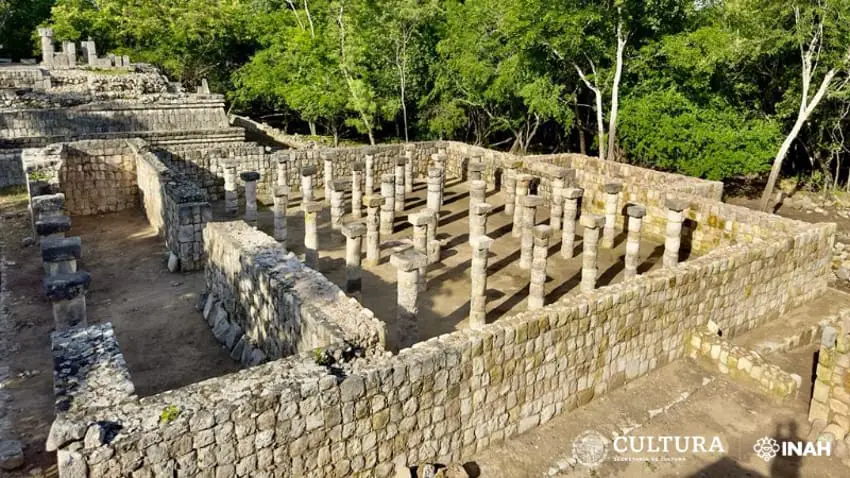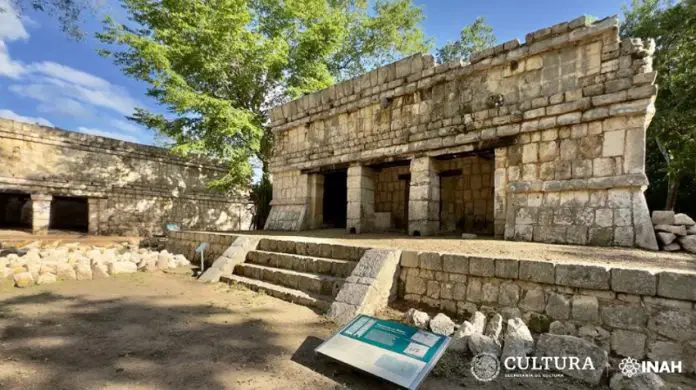Chichén Viejo (Old Chichén), a newly-restored section of the Chichén Itzá archaeological site, opened to the public on Sunday following its inauguration on Saturday by President Andrés Manuel López Obrador.
The site, once a housing complex for the city’s Maya elite, is located a few kilometers from the structure known as El Castillo or the Temple of Kukulcán, the step pyramid which is an icon of Chichén Itzá. Chichén Viejo has been closed to the public while undergoing archaeological research and restoration for over 25 years. The National Institute of Anthropology and History (INAH) had said in 2021 that the site would open in 2022.

“The site was open from 1988 until 1997 when excavations began that were consolidated in recent years thanks to the Program for the Improvement of Archaeological Zones (Promeza), which comes out of the Maya Train,” José Osorio León, director of Chichén Itzá, told Spanish news agency EFE.
President López Obrador traveled to the site’s inauguration on Saturday aboard the first carriages of the new train, which recently finished safety testing in Cancún and were performing a test trip around several stations on the Yucatán Peninsula.
AMLO used the inauguration speech to reiterate his vision that the controversial Maya Train should strengthen Mexico’s cultural identity and knowledge of its Indigenous history, as well as stimulate tourism in the southeast of the country. He also highlighted the greatness of the ancient Mayan culture, exemplified by the splendor of Chichén Viejo.
Chichén Viejo is one of 13 housing complexes surrounding the ceremonial center of Chichén Itzá. It is made up of 27 buildings dating from 650 to 700 A.D., which saw their cultural peak between 900 and 1200 A.D. Most of the structures are residential buildings and temples. The largest is the Palace of the Phalluses, which contains a house with 11 vaulted rooms and Puuc and Maya-Toltec decorations.

“In this majestic building the origin and life of an important character is displayed, it shows their struggles, sacrifices and rituals,” Osorio León explained. He added that the site will give visitors “a clearer perspective of how Maya society lived, as it will show the power that the elite had.”
Other important structures in Chichén Viejo include the Temple of the Initial Series; the Temple of Sacrifices; the Temple of Atlantean Columns; the Temple of the Owls; the Gallery of the Monkeys; and the Turtle Platform. Many of these sites are named for the sculptures and depictions of animals they contain.
The site has faced repeated access issues, with a planned key access road passing through privately owned land. On Aug. 14, local media reported that owners of the land denied entry to restoration workers and placed signs threatening to prosecute trespassers. Authorities had to rush to open an alternative 1.2-kilometer access road for the inauguration to take place as planned.
Although the site is now officially open to the public, Osorio León said that permission to enter will be restricted in order to maintain greater control of the site. It will initially be open only on certain days, to groups of around 50 people per day.
